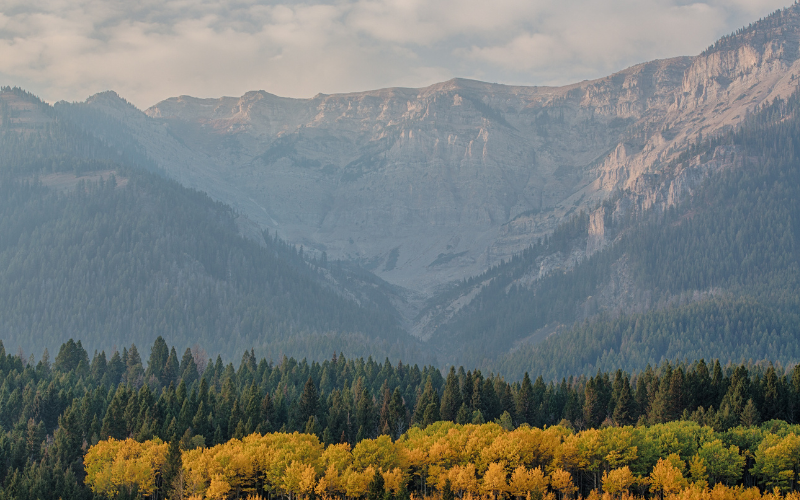Current work in wildlife, rivers, public lands, and climate
Press Releases
Conservation groups sue Fish and Wildlife Service over improper grazing management at Red Rock Lakes National Wildlife Refuge
“Red Rock Lakes National Wildlife Refuge is a vital part of the largest nearly intact ecosystem in the Lower 48, and for decades the Fish and Wildlife Service has promised to keep close tabs on grazing there to safeguard its wildlife from harm,” said Chris Krupp, Public Lands Attorney with WildEarth Guardians. “Unfortunately, it’s done no such thing. Instead, it’s repeatedly rubber-stamped grazing permits, with no genuine monitoring or evaluation of the impacts of its program.”
The Refuge was established by President Franklin Roosevelt in 1935 to protect the largest wetlands complex in the Greater Yellowstone Ecosystem. It is home to grizzly bears, sage grouse, wolves, wolverines, and more than one hundred species of birds. The namesake lakes and their tributaries contain the only remaining significant native adfluvial population (reside in lakes, spawn in streams) of Arctic grayling in the contiguous U.S. Over the last decade, that population has declined from several thousand fish to just 73 fish in 2022.
“Most protected areas in the U.S. are up in the mountains,” said Andrew Hursh, staff attorney with Advocates for the West, who is representing the conservation groups. “What’s special about Red Rock Lakes and other federal wildlife refuges is that they protect critical valley-bottom habitats. Red Rock Lakes protects ecologically diverse lakes, wetlands, and surrounding valley lands. The Fish and Wildlife Service undercuts its mission when it permits commercial cattle grazing and a maze of cattle fences here.”
The Centennial Valley is a critical corridor for grizzly bears as they continue their expansion outward from Yellowstone. Despite the risks posed to grizzlies by the presence of livestock, the Service continues to authorize cattle grazing on the Refuge without adequately accounting for potential conflicts with this ecologically important apex predator. By neglecting to monitor and meaningfully analyze the impacts of livestock grazing on grizzlies, grayling, and other Refuge species, the agency is failing to uphold its duty to the American public to protect the Refuge’s wildlife and habitat.
At least as far back as 1994, the Service has recognized that livestock grazing poses a significant threat to the Refuge’s abundant wildlife. At that time the Service claimed that the grazing program was compatible with its duty to conserve and protect wildlife, but only so long as strict conditions were in place to monitor and scrutinize grazing impacts; and that regular adjustments to the program would be made. Despite assurances made over three decades, the Service has not engaged in meaningful monitoring, evaluation, or adjustments to the grazing program. As a result, commercial grazing continues on the Refuge with little to no analysis of its impacts. With species like Arctic grayling hovering on the brink of extirpation, not understanding the impacts of grazing may have serious consequences.
“It’s bad enough that private, for-profit livestock grazing is occurring on a National Wildlife Refuge that was set aside solely for the protection of fish and wildlife,” said Patrick Kelly, Montana & Washington Director with Western Watersheds Project. “To have the agency charged with overseeing this resource extraction activity fail in its duty to monitor and analyze its ecological impacts is unacceptable.”
National Wildlife Refuges, unlike National Forests and public lands managed by the Bureau of Land Management, are not managed to favor extractive uses such as mining, logging and livestock grazing. Rather, the Service is required to manage National Wildlife Refuges for the conservation of fish, wildlife, and their habitats for the benefit of present and future generations of Americans. A commercial use, such as livestock grazing, may be permitted in some cases, but only after a formal determination that such a use is compatible with the mission of a refuge. In the case of Red Rock Lakes, the Service has repeatedly reauthorized livestock grazing while failing to meet even the basic requirements to ensure compatibility.
The complaint was filed in Federal District Court for the District of Montana by Advocates for the West on behalf of the conservation organizations. The Complaint asks the Court to set aside the grazing permits and require the Service to study the impacts, consider alternatives to grazing, and follow through on monitoring and other commitments, should it ever authorize grazing.

###